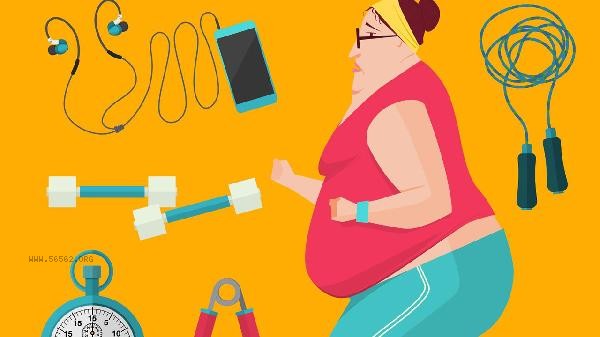Losing weight can lead to menstrual disorders, which can be improved by adjusting dietary structure, restoring reasonable calorie intake, reducing exercise intensity, psychological regulation, and seeking medical examination. Excessive dieting or exercise may disrupt the endocrine system and cause amenorrhea.

1. Adjust dietary structure
Daily intake of sufficient high-quality protein such as eggs and fish, combined with whole grains and fresh vegetables and fruits, to ensure that fat intake is not less than 20% of basal metabolism. To avoid completely cutting off carbohydrates, low glycemic index staple foods such as brown rice and oats can be chosen. Appropriately increase healthy fat sources such as nuts and olive oil to aid hormone synthesis.
2. Restore calorie intake
Increase daily calorie intake to about 1.2 times the basal metabolic value in the short term, and gradually increase to normal demand for underweight individuals. Adopting a small and frequent meal model, each meal includes staple food, protein, and dietary fiber. A diet diary can be recorded to monitor nutritional balance, and if necessary, a nutritionist can be consulted to develop personalized plans.
3. Reduce exercise load
Change high-intensity exercise to 30 minutes of low-intensity aerobic exercise three times a week, such as brisk walking and swimming. Avoid exercising on an empty stomach and replenish carbohydrates and protein promptly after exercise. Individuals with low body weight should pause vigorous exercise and focus on soothing exercises such as yoga and stretching, gradually adjusting after their menstrual cycle returns.

4. Psychological intervention
Long term weight loss stress may be suppressed by hypothalamic inhibition of gonadotropin release. Mindfulness meditation and psychological counseling can alleviate anxiety and establish a healthy body image cognition. Avoid daily weighing and shift focus from weight numbers to health indicators such as physical fitness and sleep.
5. Medical Evaluation
If amenorrhea persists for more than 3 months, medical examination is required for six hormone tests, ultrasound, etc., to rule out diseases such as polycystic ovary syndrome and early-onset ovarian dysfunction. Doctors may prescribe estrogen and progesterone cycle therapy, with commonly used medications including estradiol valerate tablets, progesterone capsules, etc., and must strictly follow the doctor's advice for medication.

During the recovery period, it is recommended to record the menstrual cycle every month, maintain 7-8 hours of sleep per day, and avoid staying up late. Moderate consumption of plant-based estrogenic foods such as flaxseed and soy products can assist in regulation. If accompanied by symptoms such as dizziness and hair loss, timely follow-up is necessary. Long term amenorrhea may lead to osteoporosis, and calcium supplements and vitamin D should be taken under the guidance of a doctor. Establishing a sustainable healthy weight loss model is more important than rapid weight loss.








Comments (0)
Leave a Comment
No comments yet
Be the first to share your thoughts!